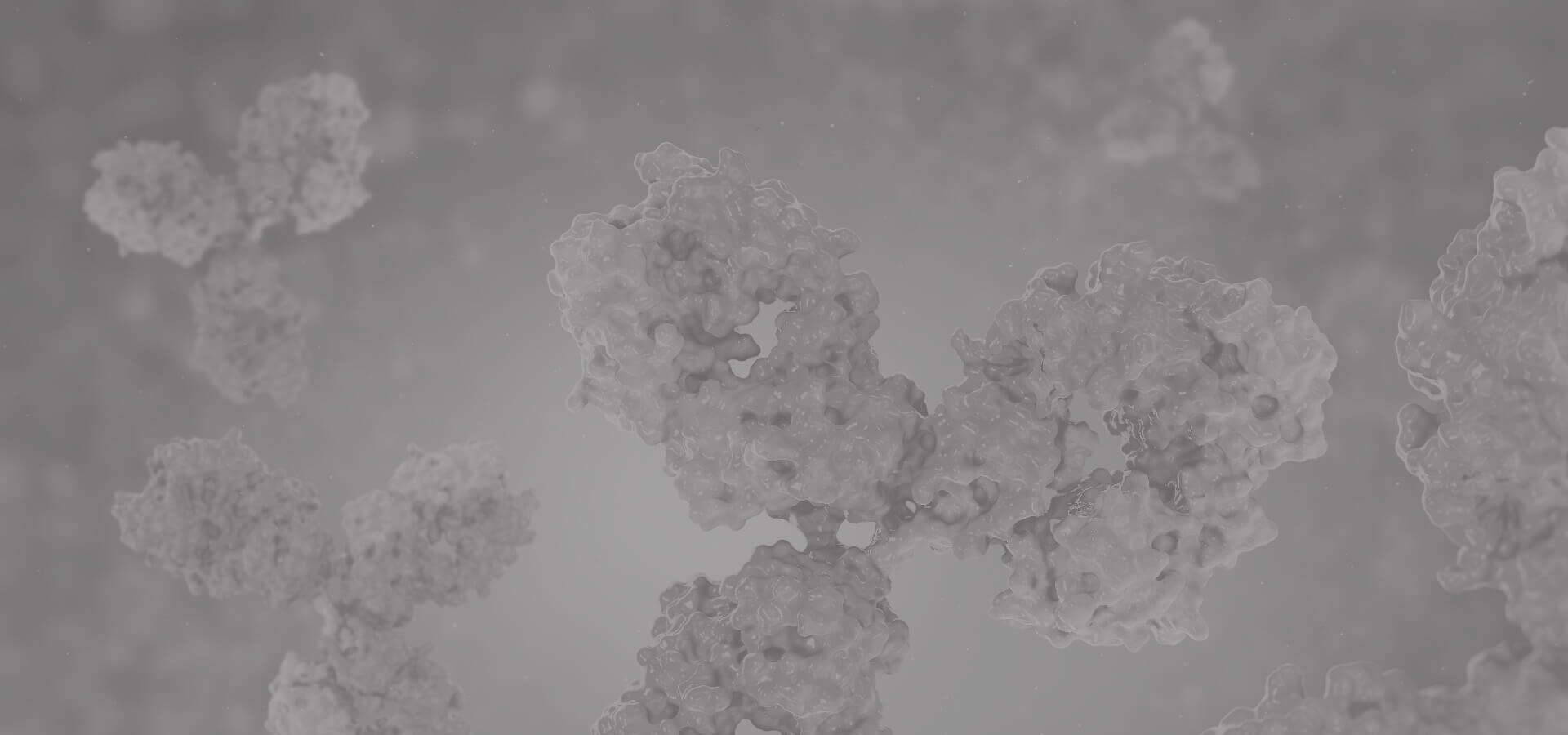VEGFC
The protein encoded by this gene is a member of the platelet-derived growth factor/vascular endothelial growth factor (PDGF/VEGF) family. The encoded protein promotes angiogenesis and endothelial cell growth, and can also affect the permeability of blood vessels. The proprotein is further cleaved into a fully processed form that can bind and activate VEGFR-2 and VEGFR-3 receptors.
Full Name
Vascular Endothelial Growth Factor C
Function
Growth factor active in angiogenesis, and endothelial cell growth, stimulating their proliferation and migration and also has effects on the permeability of blood vessels. May function in angiogenesis of the venous and lymphatic vascular systems during embryogenesis, and also in the maintenance of differentiated lymphatic endothelium in adults. Binds and activates KDR/VEGFR2 and FLT4/VEGFR3 receptors.
Biological Process
Biological Process animal organ morphogenesis Source:Ensembl
Biological Process cellular response to leukemia inhibitory factor Source:Ensembl
Biological Process glial cell proliferation Source:Ensembl
Biological Process induction of positive chemotaxis Source:UniProtKB1 Publication
Biological Process morphogenesis of embryonic epithelium Source:Ensembl
Biological Process negative regulation of blood pressure Source:Ensembl
Biological Process negative regulation of osteoblast differentiation Source:Ensembl
Biological Process positive regulation of angiogenesis Source:GO_Central1 Publication
Biological Process positive regulation of blood vessel endothelial cell migration Source:Ensembl
Biological Process positive regulation of cell division Source:UniProtKB-KW
Biological Process positive regulation of cell population proliferation Source:ProtInc1 Publication
Biological Process positive regulation of endothelial cell proliferation Source:GO_Central1 Publication
Biological Process positive regulation of glial cell proliferation Source:Ensembl
Biological Process positive regulation of lymphangiogenesis Source:Ensembl
Biological Process positive regulation of mast cell chemotaxis Source:UniProtKB1 Publication
Biological Process positive regulation of mesenchymal stem cell proliferation Source:Ensembl
Biological Process positive regulation of neuroblast proliferation Source:Ensembl
Biological Process positive regulation of protein autophosphorylation Source:Ensembl
Biological Process positive regulation of protein kinase activity Source:Ensembl
Biological Process positive regulation of protein phosphorylation Source:GO_Central1 Publication
Biological Process positive regulation of protein secretion Source:Ensembl
Biological Process regulation of vascular endothelial growth factor receptor signaling pathway Source:Ensembl
Biological Process response to hypoxia Source:GO_Central1 Publication
Biological Process response to xenobiotic stimulus Source:Ensembl
Biological Process signal transduction Source:ProtInc1 Publication
Biological Process sprouting angiogenesis Source:GO_Central1 Publication
Biological Process substrate-dependent cell migration Source:ProtInc1 Publication
Biological Process vascular endothelial growth factor receptor signaling pathway Source:UniProtKB1 Publication
Biological Process vascular endothelial growth factor signaling pathway Source:GO_Central1 Publication
Biological Process cellular response to leukemia inhibitory factor Source:Ensembl
Biological Process glial cell proliferation Source:Ensembl
Biological Process induction of positive chemotaxis Source:UniProtKB1 Publication
Biological Process morphogenesis of embryonic epithelium Source:Ensembl
Biological Process negative regulation of blood pressure Source:Ensembl
Biological Process negative regulation of osteoblast differentiation Source:Ensembl
Biological Process positive regulation of angiogenesis Source:GO_Central1 Publication
Biological Process positive regulation of blood vessel endothelial cell migration Source:Ensembl
Biological Process positive regulation of cell division Source:UniProtKB-KW
Biological Process positive regulation of cell population proliferation Source:ProtInc1 Publication
Biological Process positive regulation of endothelial cell proliferation Source:GO_Central1 Publication
Biological Process positive regulation of glial cell proliferation Source:Ensembl
Biological Process positive regulation of lymphangiogenesis Source:Ensembl
Biological Process positive regulation of mast cell chemotaxis Source:UniProtKB1 Publication
Biological Process positive regulation of mesenchymal stem cell proliferation Source:Ensembl
Biological Process positive regulation of neuroblast proliferation Source:Ensembl
Biological Process positive regulation of protein autophosphorylation Source:Ensembl
Biological Process positive regulation of protein kinase activity Source:Ensembl
Biological Process positive regulation of protein phosphorylation Source:GO_Central1 Publication
Biological Process positive regulation of protein secretion Source:Ensembl
Biological Process regulation of vascular endothelial growth factor receptor signaling pathway Source:Ensembl
Biological Process response to hypoxia Source:GO_Central1 Publication
Biological Process response to xenobiotic stimulus Source:Ensembl
Biological Process signal transduction Source:ProtInc1 Publication
Biological Process sprouting angiogenesis Source:GO_Central1 Publication
Biological Process substrate-dependent cell migration Source:ProtInc1 Publication
Biological Process vascular endothelial growth factor receptor signaling pathway Source:UniProtKB1 Publication
Biological Process vascular endothelial growth factor signaling pathway Source:GO_Central1 Publication
Cellular Location
Secreted
Involvement in disease
Lymphatic malformation 4 (LMPHM4):
A form of primary lymphedema, a disease characterized by swelling of body parts due to developmental anomalies and functional defects of the lymphatic system. Patients with lymphedema may suffer from recurrent local infections. LMPHM4 is an autosomal dominant form with onset at birth or in early childhood. Affected individuals manifest lymphedema of lower limbs with prominent veins, and impaired lymphatic uptake and drainage. Additional features are nail dysplasia, skin hyperkeratosis and papillomatosis.
A form of primary lymphedema, a disease characterized by swelling of body parts due to developmental anomalies and functional defects of the lymphatic system. Patients with lymphedema may suffer from recurrent local infections. LMPHM4 is an autosomal dominant form with onset at birth or in early childhood. Affected individuals manifest lymphedema of lower limbs with prominent veins, and impaired lymphatic uptake and drainage. Additional features are nail dysplasia, skin hyperkeratosis and papillomatosis.
PTM
Undergoes a complex proteolytic maturation which generates a variety of processed secreted forms with increased activity toward VEGFR-3, but only the fully processed form could activate VEGFR-2. VEGF-C first form an antiparallel homodimer linked by disulfide bonds. Before secretion, a cleavage occurs between Arg-227 and Ser-228 producing a heterotetramer. The next extracellular step of the processing removes the N-terminal propeptide. Finally the mature VEGF-C is composed mostly of two VEGF homology domains (VHDs) bound by non-covalent interactions.
View more
Anti-VEGFC antibodies
+ Filters
 Loading...
Loading...
Target: VEGFC
Host: Mouse
Antibody Isotype: IgG1
Specificity: Human, Mouse, Rat
Clone: 197CT7.3.4
Application*: P, WB
Target: VEGFC
Host: Mouse
Antibody Isotype: IgG
Specificity: Rat
Clone: CBYY-1578
Application*: IC, C, E, WB
Target: VEGFC
Host: Mouse
Specificity: Rabbit
Clone: CBYY-1515
Application*: E, IC, IH, WB
Target: VEGFC
Host: Mouse
Antibody Isotype: IgG1
Specificity: Human
Clone: OTI4A1
Application*: WB
Target: VEGFC
Host: Mouse
Antibody Isotype: IgG2
Specificity: Human
Clone: MM0006-2E65
Application*: WB, IH
Target: VEGFC
Host: Mouse
Antibody Isotype: IgG2a
Specificity: Human
Clone: 9/G10
Application*: WB, E
Target: VEGFC
Host: Mouse
Antibody Isotype: IgG1
Specificity: Human
Clone: 30AT1174.77
Application*: WB
Target: VEGFC
Host: Mouse
Antibody Isotype: IgG2a
Specificity: Human, Rat
Clone: 107/F10
Application*: E, WB
Target: VEGFC
Host: Mouse
Antibody Isotype: IgG2a
Specificity: Human
Clone: 107/A11
Application*: E, WB
Target: VEGFC
Host: Mouse
Antibody Isotype: IgG2b
Specificity: Human
Clone: BA0425
Application*: WB, F
Target: VEGFC
Host: Mouse
Antibody Isotype: IgG2a
Specificity: Human, Rat
Clone: 9/E7
Application*: C, P, WB
More Infomation
Hot products 
-
Mouse Anti-ENPP1 Recombinant Antibody (CBFYE-0159) (CBMAB-E0375-FY)

-
Mouse Anti-BSN Recombinant Antibody (219E1) (CBMAB-1228-CN)

-
Mouse Anti-CA9 Recombinant Antibody (CBXC-2079) (CBMAB-C0131-CQ)

-
Mouse Anti-2C TCR Recombinant Antibody (V2-1556) (CBMAB-0951-LY)

-
Mouse Anti-ATP1B3 Recombinant Antibody (1E9) (CBMAB-A4021-YC)

-
Mouse Anti-NSUN6 Recombinant Antibody (D-5) (CBMAB-N3674-WJ)

-
Mouse Anti-BHMT Recombinant Antibody (CBYY-0547) (CBMAB-0550-YY)

-
Rat Anti-ABCC11 Recombinant Antibody (V2-179001) (CBMAB-A0236-YC)

-
Human Anti-SARS-CoV-2 S1 Monoclonal Antibody (CBFYR-0120) (CBMAB-R0120-FY)

-
Mouse Anti-BLNK Recombinant Antibody (CBYY-0623) (CBMAB-0626-YY)

-
Mouse Anti-ENO2 Recombinant Antibody (H14) (CBMAB-E1341-FY)

-
Mouse Anti-BMI1 Recombinant Antibody (CBYC-P026) (CBMAB-P0108-YC)

-
Rat Anti-EMCN Recombinant Antibody (28) (CBMAB-E0280-FY)

-
Mouse Anti-COL12A1 Recombinant Antibody (CBYY-C3117) (CBMAB-C4560-YY)

-
Rat Anti-FABP3 Recombinant Antibody (CBXF-2299) (CBMAB-F1612-CQ)

-
Mouse Anti-ANXA7 Recombinant Antibody (A-1) (CBMAB-A2941-YC)

-
Mouse Anti-ALB Recombinant Antibody (V2-363290) (CBMAB-S0173-CQ)

-
Rabbit Anti-Acetyl-Histone H4 (Lys16) Recombinant Antibody (V2-623415) (CBMAB-CP1021-LY)

-
Mouse Anti-CAPZB Recombinant Antibody (CBYY-C0944) (CBMAB-C2381-YY)

-
Mouse Anti-BAD (Phospho-Ser136) Recombinant Antibody (CBYY-0138) (CBMAB-0139-YY)

For Research Use Only. Not For Clinical Use.
(P): Predicted
* Abbreviations
- AActivation
- AGAgonist
- APApoptosis
- BBlocking
- BABioassay
- BIBioimaging
- CImmunohistochemistry-Frozen Sections
- CIChromatin Immunoprecipitation
- CTCytotoxicity
- CSCostimulation
- DDepletion
- DBDot Blot
- EELISA
- ECELISA(Cap)
- EDELISA(Det)
- ESELISpot
- EMElectron Microscopy
- FFlow Cytometry
- FNFunction Assay
- GSGel Supershift
- IInhibition
- IAEnzyme Immunoassay
- ICImmunocytochemistry
- IDImmunodiffusion
- IEImmunoelectrophoresis
- IFImmunofluorescence
- IGImmunochromatography
- IHImmunohistochemistry
- IMImmunomicroscopy
- IOImmunoassay
- IPImmunoprecipitation
- ISIntracellular Staining for Flow Cytometry
- LALuminex Assay
- LFLateral Flow Immunoassay
- MMicroarray
- MCMass Cytometry/CyTOF
- MDMeDIP
- MSElectrophoretic Mobility Shift Assay
- NNeutralization
- PImmunohistologyp-Paraffin Sections
- PAPeptide Array
- PEPeptide ELISA
- PLProximity Ligation Assay
- RRadioimmunoassay
- SStimulation
- SESandwich ELISA
- SHIn situ hybridization
- TCTissue Culture
- WBWestern Blot

Online Inquiry







